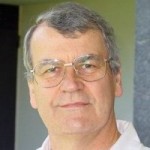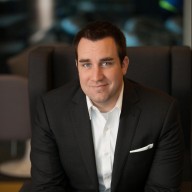
GUEST POST from Greg Satell
Throughout history there have been certain times and places that have given rise to phenomenal intellectual activity. The Vienna Circle and Cambridge’s Bloomsbury Group in the early 20th century are certainly examples, as is the Golden Age of Russian Literature in the mid-19th century and the post-war existentialist movement in Paris.
In a certain sense, these seem random, but they aren’t really. In each case, we can see undercurrents of politics, economics and other forces that gave rise to tensions people were trying to resolve. Great thinkers would explore, meet and influence each other, creating new directions and possibilities.
Yet it isn’t only intellectual life that converges in this way. History has a way of assembling forces around certain points of time and space, when long-standing trends intersect and give rise to new things. That’s why we study past events and learn about the lives of great personages long gone, so that we can hope to proactively recognize these forces and adapt.
1948: The Birth Of The Post-War Era
1948 was a pivotal year in many ways. Harry Truman was elected in a surprise upset over Thomas Dewey. Gandhi was assassinated in India. In South Africa, the white supremacist Nationalist party took power, making way for a half-century of Apartheid. The communists took power in Czechoslovakia and the Soviets sealed off Berlin. The western allies responded with a massive airlift, the likes of which the world had never seen.
Yet what probably would have more lasting effects than anything else that year didn’t involve great powers, armies or even political parties. In fact, the most consequential events that year hardly made the newspapers and most people probably weren’t even aware of them. It was in 1948 that two breakthrough innovations at Bell Labs ushered in the digital age.
The first was the transistor, invented by John Bardeen, William Shockley and Walter Brattain. Up until that time, computers used vacuum tubes, which were big, clunky, slow and tended to burn out. Transistors made it possible to make computers exponentially faster and more reliable. They also made way for the integrated circuits we still use today.
The second breakthrough, Claude Shannon’s creation of information theory, was less obvious, but no less important. The basic idea was that information can be broken down into quantifiable entities he called binary digits (or bits for short). It was information theory, along with Shannon’s earlier work that showed how Boolean algebra could be transformed through mechanical means into logic gates, that made the information age possible.
When I spoke to Fred Brooks, who led the development of IBM’s legendary System 360 that would dominate computing for a generation, he explained how both innovations proved pivotal to his work. Of course, it was the transistor that made the IBM 360 possible, but he also told me that it was his decision to switch from a 6-bit byte to an 8-bit byte, which enabled the use of lowercase letters, that helped make it transformative.
1968 – A Historically Tumultuous Year
While 1948 is remembered as a year of great events, 1946 is remembered for very different reasons. With armistices firmly in place in both the Atlantic and Pacific theaters, soldiers coming home from war started settling down and making love. With the inevitable result that came in the years that followed, the Baby Boom generation was born.
As the horrors of war receded and a new era of prosperity emerged, the Boomers began to see things very differently than previous generations. They would question authority, challenging old values and ways of doing things. Many began to advocate for gender and racial equality. Unwilling to take the world as it was, they sought to remake it in their own image.
Tensions simmered throughout the 60s, but in 1968 they would combine and explode. The year started with the Prague Spring, when a number of modest reforms in Czechoslovakia, intended to bring about “Socialism with a human face,” were met by a brutal Soviet crackdown. A few months later, Polish authorities got the message and crushed internal protests advocating for similar reforms.
During the American spring of that year Martin Luther King Jr. and Robert F. Kennedy were both assassinated. The summer brought, if anything, greater tumult. Bloody clashes between police and demonstrators at the Democratic National Convention discredited the party amongst many and paved the way for the election of Richard Nixon. Tommie Smith and John Carlos would raise their hands in a black power salute on the Olympic Podium.
Perhaps most of all, 1968 represented a handing of the baton. The 20-somethings of the 1960s would become 30-somethings of the 1970s. In the 1980s, they voted for Reagan in droves, and would shift how the the United States saw and governed itself as well as its place in the world.
1989 – Berlin Wall and World Wide Web
In November 1989, there were two watershed events that would fundamentally change how the world worked. The fall of the Berlin Wall would end the Cold War and open up markets across the world. That very same month, Tim Berners-Lee would create the World Wide Web and usher in a new technological era of networked computing.
Like in 1948 and 1968, the forces leading up to these events had been building for some time. The Polish Solidarity movement, which had been active since 1980, united activists from labor and the intelligentsia. It showed that the Soviets could be successfully defied. As the price of oil dropped throughout the 1980s, the Eastern Bloc became increasingly untenable.
In a similar way, the development of the World Wide Web had been brewing for decades. The US government had been building out ARPANET and computer scientists had been developing hypertext since the 1960s. All of the technology was in place in 1989 and Berners-Lee was able to create what became the World Wide Web in less than a month.
1989 would mark an inflection point in which the world would shift from hierarchies to networks and the global village which Marshall McLuhan had envisioned came into being. Much like he predicted, however, this village was not a friendly place, but would result in a “release of human power and aggressive violence” from which we are still reeling.
The Power Of Cascades
In my book Cascades, I explained how small groups, loosely connected but united by a shared purpose drive transformational change. It happens gradually, almost imperceptibly, at first. Connections accumulate under the surface, barely noticed, as small groups slowly begin to link together and congeal into a network. Eventually things hit a tipping point.
It’s not just people that are networked though, events are as well. There are always unseen connections between the forces of economics, technology, culture, politics and many other things. Much like social and political movements, the effects are almost impossible to detect at first, but can accelerate in nonlinear ways that defy the prediction of experts.
By all indications, we are in such a period now. We are undergoing four major shifts in technology, resources, migration and demography that will be transformative. Clearly, these shifts will create significant opportunities, but also great peril. The last time we saw this much change afoot was during the 1920s and that didn’t end well.
Yet that doesn’t have to happen. In 1948 we were able to create a new world order that ushered in an era of peace and prosperity unequalled in human history. The events of 1968 and 1989 also helped to bring about enormous progress. The difference between those epochs wasn’t so much due to any underlying forces, but the choices that were made.
Every generation faces great challenges. Some are remembered for their achievements, others for their tragedies. Like earlier generations, we have important choices to make. We should endeavor to choose wisely.
— Article courtesy of the Digital Tonto blog
— Image credits: Pexels
![]() Sign up here to join 17,000+ leaders getting Human-Centered Change & Innovation Weekly delivered to their inbox every week.
Sign up here to join 17,000+ leaders getting Human-Centered Change & Innovation Weekly delivered to their inbox every week.
 After a week of torrid voting and much passionate support, along with a lot of gut-wrenching consideration and jostling during the judging round, I am proud to announce your Top 40 Innovation Bloggers of 2023:
After a week of torrid voting and much passionate support, along with a lot of gut-wrenching consideration and jostling during the judging round, I am proud to announce your Top 40 Innovation Bloggers of 2023:

 Greg Satell is a popular speaker and consultant. His first book,
Greg Satell is a popular speaker and consultant. His first book,  Mike Shipulski brings together people, culture, and tools to change engineering behavior. He writes daily on Twitter as
Mike Shipulski brings together people, culture, and tools to change engineering behavior. He writes daily on Twitter as 

 A twenty-five year Procter & Gamble veteran, Pete has spent the last 8+ years applying insights from psychology and behavioral science to innovation, product design, and brand communication. He spent 17 years as a serial innovator, creating novel products, perfume delivery systems, cleaning technologies, devices and many other consumer-centric innovations, resulting in well over 100 granted or published patents. Find him at pete.mindmatters@gmail.com
A twenty-five year Procter & Gamble veteran, Pete has spent the last 8+ years applying insights from psychology and behavioral science to innovation, product design, and brand communication. He spent 17 years as a serial innovator, creating novel products, perfume delivery systems, cleaning technologies, devices and many other consumer-centric innovations, resulting in well over 100 granted or published patents. Find him at pete.mindmatters@gmail.com







 Soren Kaplan is the bestselling and award-winning author of Leapfrogging and The Invisible Advantage, an affiliated professor at USC’s Center for Effective Organizations, a former corporate executive, and a co-founder of
Soren Kaplan is the bestselling and award-winning author of Leapfrogging and The Invisible Advantage, an affiliated professor at USC’s Center for Effective Organizations, a former corporate executive, and a co-founder of 
 Diana heads marketing at
Diana heads marketing at 
 Dainora (a.k.a. Dee) creates customer-centric content at Viima. Viima is the most widely used and highest rated innovation management software in the world. Passionate about environmental issues, Dee writes about sustainable innovation hoping to save the world – one article at the time.
Dainora (a.k.a. Dee) creates customer-centric content at Viima. Viima is the most widely used and highest rated innovation management software in the world. Passionate about environmental issues, Dee writes about sustainable innovation hoping to save the world – one article at the time.
 Arlen Meyers, MD, MBA is an emeritus professor at the University of Colorado School of Medicine, an instructor at the University of Colorado-Denver Business School and cofounding President and CEO of the Society of Physician Entrepreneurs at
Arlen Meyers, MD, MBA is an emeritus professor at the University of Colorado School of Medicine, an instructor at the University of Colorado-Denver Business School and cofounding President and CEO of the Society of Physician Entrepreneurs at 
 Leo is the founder of
Leo is the founder of  Rachel Audige is an Innovation Architect who helps organisations embed inventive thinking as well as a certified Systematic Inventive Thinking Facilitator, based in Melbourne.
Rachel Audige is an Innovation Architect who helps organisations embed inventive thinking as well as a certified Systematic Inventive Thinking Facilitator, based in Melbourne. Art Inteligencia is the lead futurist at Inteligencia Ltd. He is passionate about content creation and thinks about it as more science than art. Art travels the world at the speed of light, over mountains and under oceans. His favorite numbers are one and zero.
Art Inteligencia is the lead futurist at Inteligencia Ltd. He is passionate about content creation and thinks about it as more science than art. Art travels the world at the speed of light, over mountains and under oceans. His favorite numbers are one and zero.
 Phil McKinney is the Author of “Beyond The Obvious”, Host of the Killer Innovations Podcast and Syndicated Radio Show, a Keynote Speaker, President & CEO CableLabs and an Innovation Mentor and Coach.
Phil McKinney is the Author of “Beyond The Obvious”, Host of the Killer Innovations Podcast and Syndicated Radio Show, a Keynote Speaker, President & CEO CableLabs and an Innovation Mentor and Coach. Dr. Ralph-Christian Ohr has extensive experience in product/innovation management for international technology-based companies. His particular interest is targeted at the intersection of organizational and human innovation capabilities. You can follow him on Twitter
Dr. Ralph-Christian Ohr has extensive experience in product/innovation management for international technology-based companies. His particular interest is targeted at the intersection of organizational and human innovation capabilities. You can follow him on Twitter 
 Dr. Dean Anderson and Dr. Linda Ackerman Anderson lead
Dr. Dean Anderson and Dr. Linda Ackerman Anderson lead 

 Scott Anthony is a strategic advisor, writer and speaker on topics of growth and innovation. He has been based in Singapore since 2010, and currently serves at the Managing Director of Innosight’s Asia-Pacific operations.
Scott Anthony is a strategic advisor, writer and speaker on topics of growth and innovation. He has been based in Singapore since 2010, and currently serves at the Managing Director of Innosight’s Asia-Pacific operations. Paul Hobcraft runs
Paul Hobcraft runs 
 Chateau G Pato is a senior futurist at Inteligencia Ltd. She is passionate about content creation and thinks about it as more science than art. Chateau travels the world at the speed of light, over mountains and under oceans. Her favorite numbers are one and zero.
Chateau G Pato is a senior futurist at Inteligencia Ltd. She is passionate about content creation and thinks about it as more science than art. Chateau travels the world at the speed of light, over mountains and under oceans. Her favorite numbers are one and zero. Jesse Nieminen is the Co-founder and Chairman at
Jesse Nieminen is the Co-founder and Chairman at  As an experience architect, Alain helps leaders craft customer, employee and shareholder experiences for profit, reinvention and transformation. He does this through his personal consultancy Alain Thys & Co as well as the transformative venture studio
As an experience architect, Alain helps leaders craft customer, employee and shareholder experiences for profit, reinvention and transformation. He does this through his personal consultancy Alain Thys & Co as well as the transformative venture studio 






 After a week of torrid voting and much passionate support, along with a lot of gut-wrenching consideration and jostling during the judging round, I am proud to announce your Top 40 Innovation Bloggers of 2022:
After a week of torrid voting and much passionate support, along with a lot of gut-wrenching consideration and jostling during the judging round, I am proud to announce your Top 40 Innovation Bloggers of 2022:
 Greg Satell is a popular speaker and consultant. His first book,
Greg Satell is a popular speaker and consultant. His first book,  Mike Shipulski brings together people, culture, and tools to change engineering behavior. He writes daily on Twitter as
Mike Shipulski brings together people, culture, and tools to change engineering behavior. He writes daily on Twitter as  A twenty-five year Procter & Gamble veteran, Pete has spent the last 8+ years applying insights from psychology and behavioral science to innovation, product design, and brand communication. He spent 17 years as a serial innovator, creating novel products, perfume delivery systems, cleaning technologies, devices and many other consumer-centric innovations, resulting in well over 100 granted or published patents. Find him at pete.mindmatters@gmail.com
A twenty-five year Procter & Gamble veteran, Pete has spent the last 8+ years applying insights from psychology and behavioral science to innovation, product design, and brand communication. He spent 17 years as a serial innovator, creating novel products, perfume delivery systems, cleaning technologies, devices and many other consumer-centric innovations, resulting in well over 100 granted or published patents. Find him at pete.mindmatters@gmail.com Soren Kaplan is the bestselling and award-winning author of Leapfrogging and The Invisible Advantage, an affiliated professor at USC’s Center for Effective Organizations, a former corporate executive, and a co-founder of
Soren Kaplan is the bestselling and award-winning author of Leapfrogging and The Invisible Advantage, an affiliated professor at USC’s Center for Effective Organizations, a former corporate executive, and a co-founder of  Arlen Meyers, MD, MBA is an emeritus professor at the University of Colorado School of Medicine, an instructor at the University of Colorado-Denver Business School and cofounding President and CEO of the Society of Physician Entrepreneurs at
Arlen Meyers, MD, MBA is an emeritus professor at the University of Colorado School of Medicine, an instructor at the University of Colorado-Denver Business School and cofounding President and CEO of the Society of Physician Entrepreneurs at  Jesse Nieminen is the Co-founder and Chairman at
Jesse Nieminen is the Co-founder and Chairman at 


 Dr. Ralph-Christian Ohr has extensive experience in product/innovation management for international technology-based companies. His particular interest is targeted at the intersection of organizational and human innovation capabilities. You can follow him on Twitter
Dr. Ralph-Christian Ohr has extensive experience in product/innovation management for international technology-based companies. His particular interest is targeted at the intersection of organizational and human innovation capabilities. You can follow him on Twitter 


 Norbert Majerus is a popular keynote speaker and consultant. His latest book, Winning Innovation – How Innovation Excellence Propels an Industry Icon Toward Sustained Prosperity, is available now. Follow him on
Norbert Majerus is a popular keynote speaker and consultant. His latest book, Winning Innovation – How Innovation Excellence Propels an Industry Icon Toward Sustained Prosperity, is available now. Follow him on 
 Paul Hobcraft runs
Paul Hobcraft runs 
 After a week of torrid voting and much passionate support, along with a lot of gut-wrenching consideration and jostling during the judging round, I am proud to announce your Top 40 Innovation Bloggers of 2021:
After a week of torrid voting and much passionate support, along with a lot of gut-wrenching consideration and jostling during the judging round, I am proud to announce your Top 40 Innovation Bloggers of 2021: Nicolas is an International Innovation Executive, expert in corporate innovation programs, and innovation labs, designing place where good innovation thrives! He currently helps the 20 innovation managers of Orange Africa to develop their projects locally. In 2019 he wrote
Nicolas is an International Innovation Executive, expert in corporate innovation programs, and innovation labs, designing place where good innovation thrives! He currently helps the 20 innovation managers of Orange Africa to develop their projects locally. In 2019 he wrote  Gijs van Wulfen helps organizations to structure the chaotic start of innovation as author, speaker and facilitator. He is the founder of the FORTH innovation method and author of the innovation bestseller The Innovation Expedition. He was chosen by LinkedIn as one of their first 150 Influencers. Follow Gijs @gijsvanwulfen
Gijs van Wulfen helps organizations to structure the chaotic start of innovation as author, speaker and facilitator. He is the founder of the FORTH innovation method and author of the innovation bestseller The Innovation Expedition. He was chosen by LinkedIn as one of their first 150 Influencers. Follow Gijs @gijsvanwulfen


 Tom Koulopoulos is the author of 10 books and founder of the
Tom Koulopoulos is the author of 10 books and founder of the  Michael Graber is the cofounder and managing partner at
Michael Graber is the cofounder and managing partner at  Shawn Nason, founder and CEO of MOFI, lives his life with a commitment to make everyone he meets a part of his family. Armed with the gift of discernment, he has the uncanny ability to walk alongside people as they struggle to connect with their deepest passions and engage their most debilitating demons. He challenges the world around him to be fully present, get real, and knock down the barrier that separates the various compartments in their lives.
Shawn Nason, founder and CEO of MOFI, lives his life with a commitment to make everyone he meets a part of his family. Armed with the gift of discernment, he has the uncanny ability to walk alongside people as they struggle to connect with their deepest passions and engage their most debilitating demons. He challenges the world around him to be fully present, get real, and knock down the barrier that separates the various compartments in their lives.
 John Carter has been a widely respected adviser to technology firms over his career. John is the author of
John Carter has been a widely respected adviser to technology firms over his career. John is the author of 
 Ludwig Melik is CEO of Planbox, whose mission is to help organizations thrive by transforming the culture of agile work, continuous innovation, and creativity across the entire organization… Connect with him on LinkedIn or join the conversation by following Planbox on Facebook, Twitter, and LinkedIn.
Ludwig Melik is CEO of Planbox, whose mission is to help organizations thrive by transforming the culture of agile work, continuous innovation, and creativity across the entire organization… Connect with him on LinkedIn or join the conversation by following Planbox on Facebook, Twitter, and LinkedIn.

 Eric Eskey is a Managing Director at Strategyn, an innovation consultancy. Eric is in the business of creating the future. I aim to use the resources he has – his work, investments, voice, and imagination – to encourage innovation and defeat the hidden forces that resist it.
Eric Eskey is a Managing Director at Strategyn, an innovation consultancy. Eric is in the business of creating the future. I aim to use the resources he has – his work, investments, voice, and imagination – to encourage innovation and defeat the hidden forces that resist it.
 Mick Simonelli is an innovator with 20+ years of implementing change and positive disruption at USAA. As a military veteran, he held transformation roles in numerous military organizations; and as a business executive, he purposely hired vets to help launch numerous innovations as the Chief Innovation Officer for a Fortune 500 company. Mick currently serves as an innovation consultant and can be found at www.micksimonelli.com Follow @MickSimonelli
Mick Simonelli is an innovator with 20+ years of implementing change and positive disruption at USAA. As a military veteran, he held transformation roles in numerous military organizations; and as a business executive, he purposely hired vets to help launch numerous innovations as the Chief Innovation Officer for a Fortune 500 company. Mick currently serves as an innovation consultant and can be found at www.micksimonelli.com Follow @MickSimonelli
 Mitch Ditkoff is the Co-Founder and President of Idea Champions and the author of “Awake at the Wheel”, as well as the very popular Heart of Innovation blog.
Mitch Ditkoff is the Co-Founder and President of Idea Champions and the author of “Awake at the Wheel”, as well as the very popular Heart of Innovation blog.
 Peter Cook leads Human Dynamics and The Academy of Rock, providing Keynotes, Organisational Development and Coaching. He is the author of seven books on business leadership. His three passions are science, business and music, having led innovation teams for 18 years to develop life-saving drugs including the first treatments for AIDS and the development of Human Insulin. Peter is Music and Business editor at Innovation Excellence. You can follow him on twitter @Academyofrock.
Peter Cook leads Human Dynamics and The Academy of Rock, providing Keynotes, Organisational Development and Coaching. He is the author of seven books on business leadership. His three passions are science, business and music, having led innovation teams for 18 years to develop life-saving drugs including the first treatments for AIDS and the development of Human Insulin. Peter is Music and Business editor at Innovation Excellence. You can follow him on twitter @Academyofrock.
 Mukesh Gupta is Director of Customer Advocacy, SAP India Private Limited. He also served as Executive Liaison for the SAP User group in India, and as a Global Lead in Sales & Business Development. He blogs, and shares podcasts and videos, on his site rmukeshgupta.com
Mukesh Gupta is Director of Customer Advocacy, SAP India Private Limited. He also served as Executive Liaison for the SAP User group in India, and as a Global Lead in Sales & Business Development. He blogs, and shares podcasts and videos, on his site rmukeshgupta.com
 After a week of torrid voting and much passionate support, along with a lot of gut-wrenching consideration and jostling during the judging round, I am proud to announce your Top 40 Innovation Bloggers of 2020:
After a week of torrid voting and much passionate support, along with a lot of gut-wrenching consideration and jostling during the judging round, I am proud to announce your Top 40 Innovation Bloggers of 2020:
 Francesco Pagano, Vice President, EMEA Head of Portfolio of Licenses Brands at Fossil Group Europe, is passionate about craft brands, innovation, brand management, brand communication and international business. He is always up for irresistible product concepts, ultimate communication via integrated campaigns and great Italian food.
Francesco Pagano, Vice President, EMEA Head of Portfolio of Licenses Brands at Fossil Group Europe, is passionate about craft brands, innovation, brand management, brand communication and international business. He is always up for irresistible product concepts, ultimate communication via integrated campaigns and great Italian food. Dimis Michaelides is a keynote speaker, author, consultant and trainer in leadership, creativity and innovation. Contact him for a workshop or a presentation at
Dimis Michaelides is a keynote speaker, author, consultant and trainer in leadership, creativity and innovation. Contact him for a workshop or a presentation at  Greg Heist is the Chief Innovation Officer at Gongos, a decision intelligence company.
Greg Heist is the Chief Innovation Officer at Gongos, a decision intelligence company.
 Urko Wood helps clients of Reveal Growth find and capitalize on the best opportunities for innovation and growth in their markets. He is one of only a handful of people in North America who are expert practitioners in the breakthrough “jobs-to-be-done” (JTBD) innovation approach that has enabled over 400 of the Fortune 1000 to generate billions of dollars in new revenue and achieve new product success rates of over 80%.
Urko Wood helps clients of Reveal Growth find and capitalize on the best opportunities for innovation and growth in their markets. He is one of only a handful of people in North America who are expert practitioners in the breakthrough “jobs-to-be-done” (JTBD) innovation approach that has enabled over 400 of the Fortune 1000 to generate billions of dollars in new revenue and achieve new product success rates of over 80%.

 Neil Sholay is re-shaping innovation and digital experiences as a Vice President of Digital Innovation for EMEA & JAPAC at Oracle. He leads a curious, multidisciplinary team of thinkers, Ideators, strategists, designers, developers, storytellers, rebels and proud geeks, who are reshaping Innovation and digital experiences. They bring new ideas & business models to life, using co-innovation and rapid prototyping.
Neil Sholay is re-shaping innovation and digital experiences as a Vice President of Digital Innovation for EMEA & JAPAC at Oracle. He leads a curious, multidisciplinary team of thinkers, Ideators, strategists, designers, developers, storytellers, rebels and proud geeks, who are reshaping Innovation and digital experiences. They bring new ideas & business models to life, using co-innovation and rapid prototyping.









 I originally posed this software design challenge to application developers in September 2008 based on an InfoWorld
I originally posed this software design challenge to application developers in September 2008 based on an InfoWorld